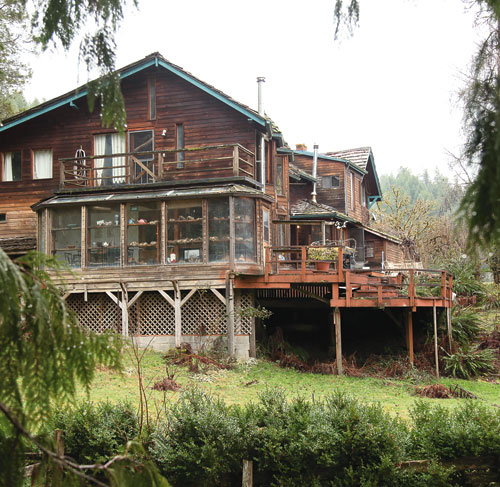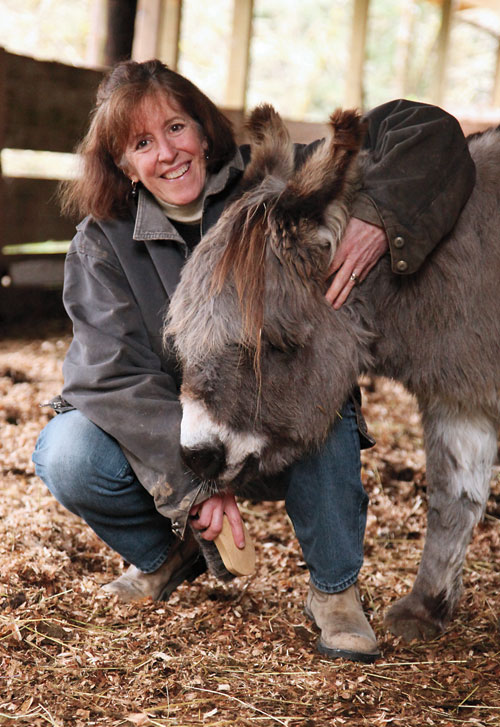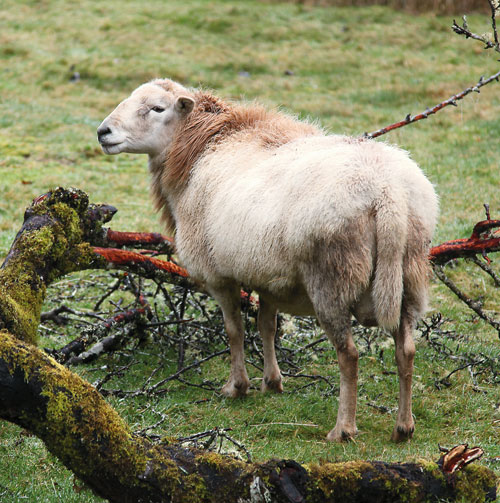 FarmStay U.S.: a website connecting guests with working farms and ranches.
FarmStay U.S.: a website connecting guests with working farms and ranches.
BY LINDA BAKER
 |
Scottie Jones and her Sicilian donkey Paco at her Alsea farm.// Photo by Alexandra Shyshkina |
When former Phoenix residents Scottie and Greg Jones decided to abandon city life and buy a farm in Alsea, about 25 miles southwest of Corvallis, the couple planned to make a go of it selling lamb and hay from the 64-acre spread. But when farming proved to be less than self-sustaining, Scottie, a former marketing director for the Phoenix Zoo, decided to bring in extra money by hosting urbanites hungry for a weekend on the farm.
It was a smart move. Last year, Jones grossed $28,000 from her “Leaping Lamb” farmstay, attracting overnight guests eager to gather farm-fresh eggs, pet the resident sheep, and brush Paco, the Sicilian donkey.
Now Jones is spreading the wealth. In 2010, she launched FarmStay U.S. (farmstayus.com), a website designed to connect guests with farm and ranch stays throughout the country. Modeled after similar programs in Europe, Farmstay now has 950 participating farms, including 27 in Oregon.
Sitting in her ramshackle but cozy farmhouse, set among wet green hills, the 58-year old Jones talked to Oregon Business about diversifying small farms, teaching city dwellers to touch nature and how guests from outside the U.S. are best at scooping poop.
OB: Why should a small farmer play innkeeper?
A farmstay equalizes and adds value to small farms. It isn’t dependent on the price of lamb; it isn’t dependent on the price of hay. I’m booked every weekend from mid March until the end of October and have guests in January and February. I block out December so I don’t have a nervous breakdown.
 |
 |
AT TOP: The Jones’ farmhouse.ABOVE: One of the many animals that roam the 64-acre farmland.//Photos by Alexandra Shyshkina |
OB: FarmStay U.S. brought in just $8,000 last year. What’s your growth strategy?
At first I put all the farms on for free. Trying to get money afterwards is a pain in the ass. But I expect to bring in $100,000 this year. There are 1.2 million small farms in the U.S. If I can get 1% to 2% to join, then we’re talking 12,000 to 24,000 members at $120 a year. That’s just two lattes a month, although you can’t say that because farmers don’t drink lattes.
OB: How do you persuade farmers and ranchers to pay for your service?
I want to talk about us as a marketing co-op. Farmers have been members of co-ops for a long time. If we join together we have momentum, and it won’t cost as much as doing it on our own. The younger farmers are pretty hip to the idea. It’s the older farmers I’m trying to encourage.
OB: If I’m paying to stay on a farm, do I have to work, too?
95% of people do work, feeding or brushing animals, although if you’re talking scooping poop that drops to 5%. People from South Africa are the best at that. Some guests come to retreat. Others want direct knowledge of farm life: how to feed a chicken, what’s the difference between cracking open an egg and getting a yolk or a chick. Some want their kids to play in a hayloft. But none of us will put you to work unless you want to.
OB: What’s your worst experience as a farmstay host?
I have never had a bad guest. I did have one mother who thought it would be helpful for her three kids to clean our barn. That lasted five minutes.

